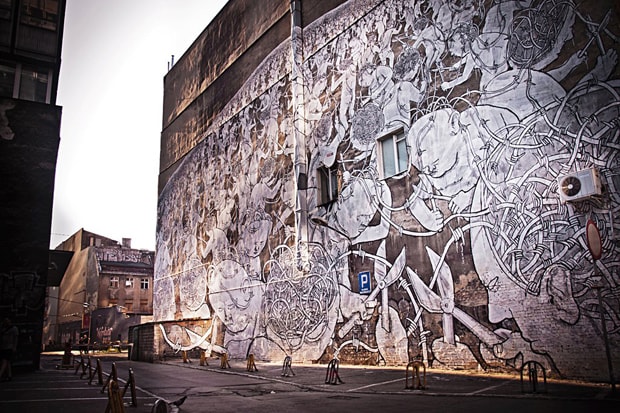Incase x Rostarr for Curated by Arkitip Interview
Rostarr makes his way to the Incase Curated by Arkitip series. Born in Korea, Romon Kimin Yang,

Rostarr makes his way to the Incase Curated by Arkitip series. Born in Korea, Romon Kimin Yang, more commonly known by his moniker Rostarr, is a multidisciplinary artist, painter and filmmaker living and working in Brooklyn. For the past 15 years, he’s blurred the lines between graphic design and art and is best known for his colorful abstract polymorphic paintings, totemic iconographic characters, and black and white calligraphic drawings. The Curated by Arkitip for Incase collection includes a Snap Case for iPhone 4, Book Jacket for iPad and 15″ Sleeve for the MacBook Pro, all of which can now be purchased here. Offered below is a short interview with Rostarr.

What was the concept behind your work for Incase?
The concept behind the works is based on a series of geometric paintings inspired by the Tour de France in 2009 titled ‘Prefectures Of The Competitive Mind’, but more widely about the nature of competition between individuals, the energy and emotion of the race as its happening and, ultimately, the reward.
With a calligraphic aspect to your art, how much of this is derived from your Asian roots?
My Asian roots definitely have a big influence on my calligraphic work. I grew up understanding the importance of Asian calligraphy at an early age through my father who was a poet and teacher. I’m also heavily influenced by Arabic and English script and graffiti hand styles.
Has your process for designing and creating changed with the digital era?
For sure. In the early 90’s, I used to design logos and typography by hand, using a t-square & rapidograph, setting type, etc. My design process has changed as far as skipping a few steps but I like to treat the computer as a tool. The most interesting part of the digital influence is the role it plays in my painting process— sometimes I make paintings based on vector works made in illustrator and vice versa.

Does the meaning of art change to you as it becomes more ubiquitous such as with a project like this?
I don’t think the meaning of art changes just because it’s more mainstream. It still functions as artwork in the economy of art—everything from rare and more significant goods like paintings and print editions to laptop cases—it’s all art. Participating in these types of projects also helps to build interest with future art collectors that start collecting your work through something more mainstream.
Since the project is very much on a technological angle, how has technology changed your everyday routine? In what aspects good/bad?
I hate to admit it but technology takes a lot of my time in a day—I use a computer or laptop, iPad and iPhone everyday. It has a lot of good aspects like convenience, empowering individuals in the industry and home, networking, communication, etc., but the downside is spending too much time indoors or confined to a computer and having less face-to-face communication. (Not to mention back problems!) It’s also really distracting when you’re trying to work on paintings. Sometimes I just have to shut down all my devices on the days when I really need to concentrate.













